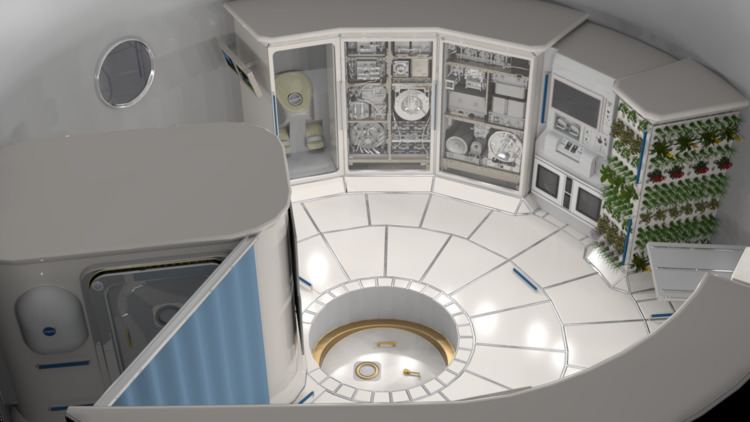 | ||
Next Space Technologies for Exploration Partnerships (NextSTEP) is a NASA program using a public-private partnership model that seeks commercial development of deep space exploration capabilities to support more extensive human space flight missions in the Proving Ground around and beyond cislunar space—the space near Earth that extends just beyond the moon.
Contents
Program overview
NextSTEP is a public-private partnership model that seeks commercial development of deep space exploration capabilities to support more extensive human space flight missions in the Proving Ground around and beyond cislunar space—the space near Earth that extends just beyond the moon.
NASA issued the original NextSTEP Broad Agency Announcement (BAA) to U.S. industry in late 2014, and issued the second NextSTEP BAA in April 2016.
An important part of NASA's strategy is to stimulate the commercial space industry to help the agency achieve its strategic goals and objectives for expanding the frontiers of knowledge, capability, and opportunities in space. A key component of the NextSTEP partnership model is that it provides an opportunity for NASA and industry to partner to develop capabilities that meet NASA human space exploration objectives while also supporting industry commercialization plans.
NextSTEP (first selection)
In April 2015 the first NextSTEP selection by NASA selected 12 Partnerships to advance concept studies and technology development projects in the areas of advanced propulsion, habitation and small satellites.
Selected advanced electric propulsion projects developed propulsion technology systems in the 50- to 300-kilowatt range to meet the needs of a variety of deep space mission concepts. The three NextSTEP advanced propulsion projects, $400,000 to $3.5 million per year per award, were limited to a three-year performance period focused on ground testing efforts. The selected companies were:
These selections were intended to augment the Orion capsule with the development of capabilities to initially sustain a crew of four for up to 60 days in cis-lunar space with the ability to scale up to transit habitation capabilities for future Mars missions. The selected projects addressed concepts and, in some cases, provide advancement in technologies related to habitation and operations, or environmental control and life support capabilities of a habitation system. The seven NextSTEP habitat projects had initial performance periods of up to 12 months, at a value of $400,000 to $1 million for the study and development efforts, with the potential for follow-on phases to be defined during the initial phase. The selected companies were:
The CubeSat projects selected in the award were expected to fly as secondary payload missions on the first flight of the Space Launch System, Exploration Mission-1 (EM-1). CubeSat selections addressed NASA’s strategic knowledge gaps reducing risk, increasing effectiveness, and improving the design of robotic and human space exploration.
The two NextSTEP CubeSat projects had fixed-price contracts with technical and payment milestones and total values for the entire development and operations of $1.4 to $7.9 million per award. The selected companies were:
NextSTEP activities were executed through fixed-price contracts with milestone payments, combined with corporate-resource contributions. The selected partner provided overall study and technology development efforts, benefiting NASA and future commercial endeavours.
NextSTEP-2
Starting in September 2016 six partners were given approximately 24 months to develop ground prototypes and/or conduct concept studies for deep space habitats. Habitation systems provide a safe place for humans to live as humans move beyond Earth, especially in the context of the Journey to Mars. The selected companies were:
In August 2016 NASA estimated the combined total of all the awards, covering work in 2016 and 2017, would be approximately $65 million, with additional efforts and funding continuing into 2018. Partners were required to contribute at least 30 percent of the cost of the overall proposed effort.
Progress
As of August 2016, the first phase of NextSTEP had been completed and negotiations with the companies for NextSTEP-2 agreements were started.
Funding summary
The funding of all Exploration partners for each phase of the NextSTEP program is as follows
